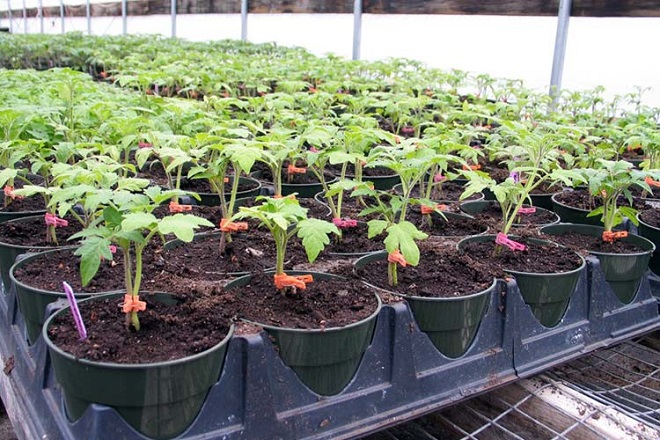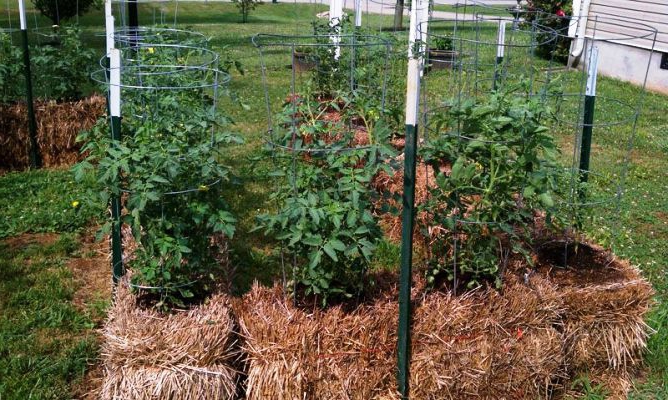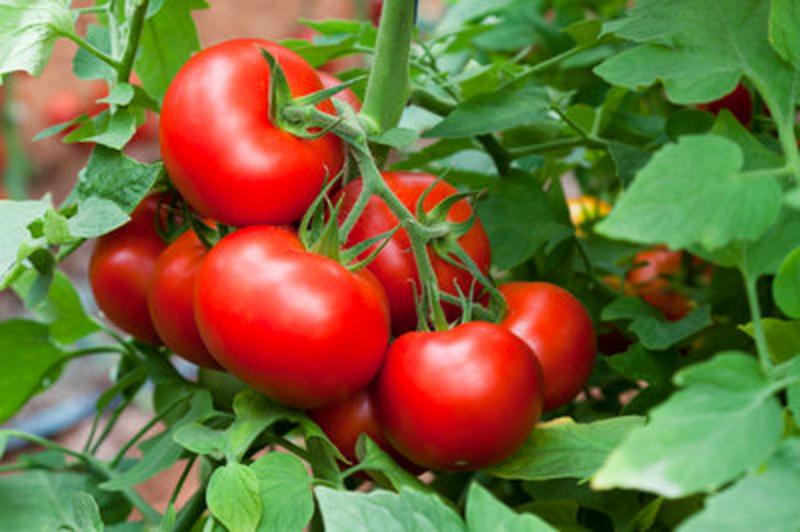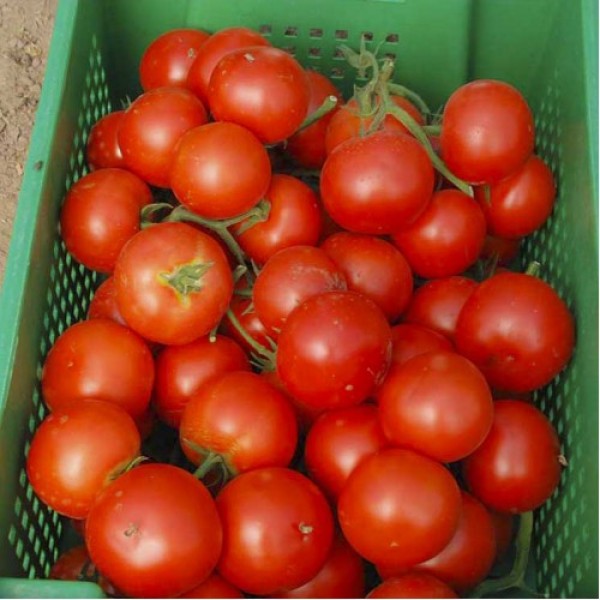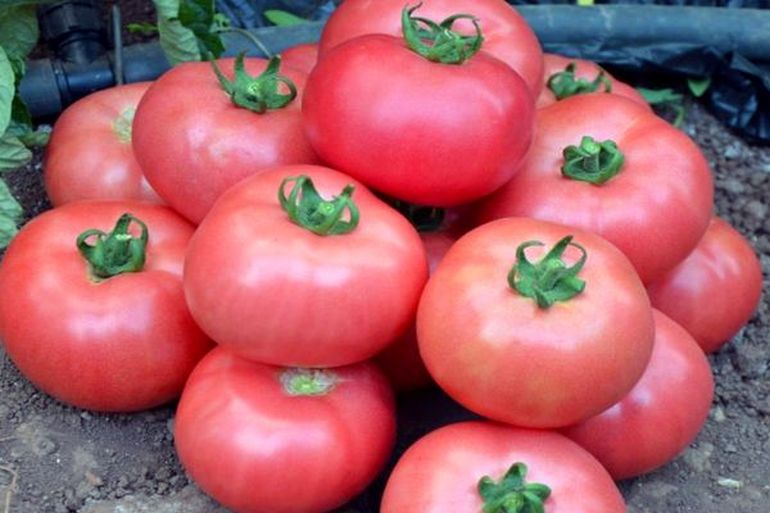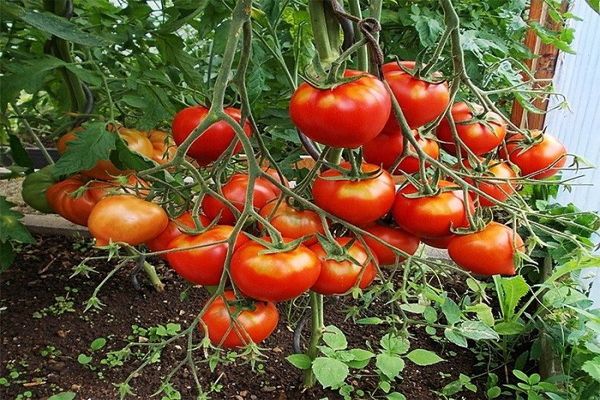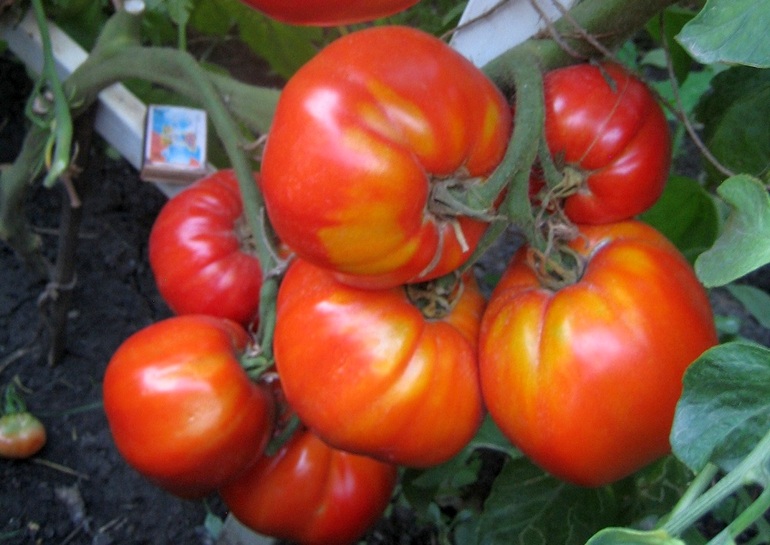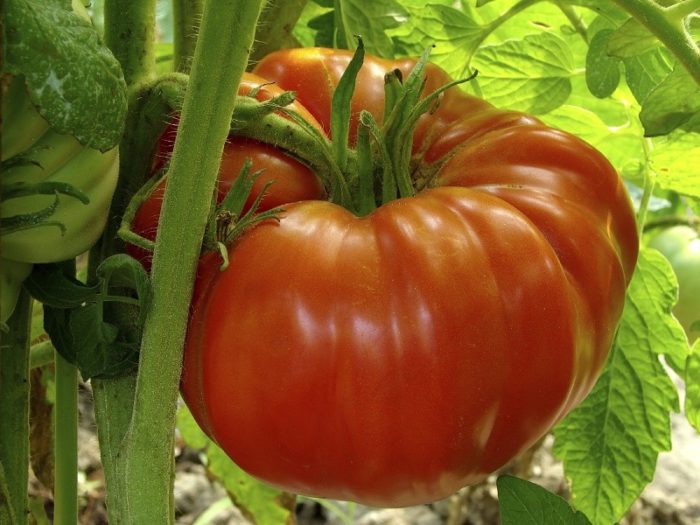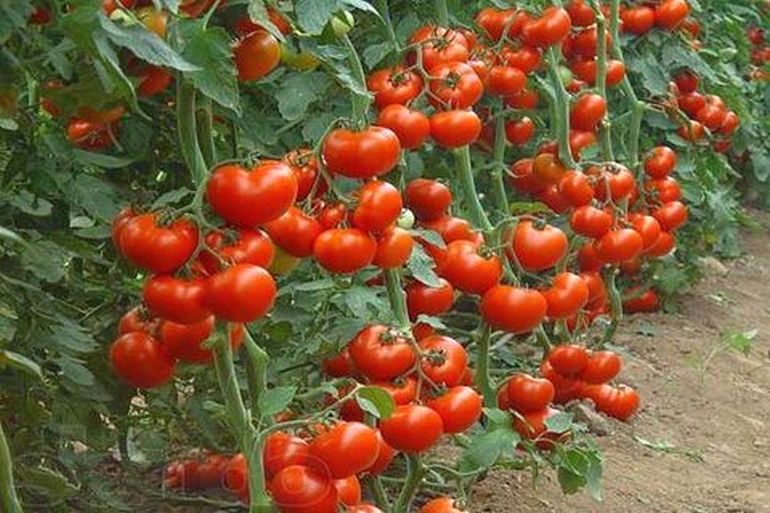Content:
This tomato variety is ultra-early ripening and productive. Tomato Dubrava is very old and well known to many experienced gardeners. Despite the short stature of the crop, its high yield and excellent fruit taste are noted. Tomatoes are grown throughout the territory.
Characteristics of the variety
Tomato Dubrava starts yielding only 85-90 days after the mass emergence of seedlings, which is typical for early and ultra-early varieties. The culture is grown in seedlings, followed by planting on open ground beds. A universal variety does not need pinching, tying, which makes it popular and desirable in the gardens.
Bush
Dubrava tomatoes are determinant due to the small size of the bush. A weakly branched strong bush develops within 45-65 cm in height. The sheet is fine, slightly corrugated. All tops are light green. Simple inflorescences are compact.
Yield
The maximum yield of the crop occurs if the bush has 3-4 stems. The first brush is formed after 6 leaves, and then every two leaves. One brush can give off almost a dozen tomatoes.
Round fruits, with an average weight not exceeding 100 g, have a slight ribbing. Tomatoes are bright red, with a slight sourness, dense, dryish. Timely harvest can yield up to 5 kg of tomato from a bush per season.
The yield indicator also depends on the climate of the region where Dubrava is grown. For example, in the Moscow region, crops are harvested up to 2.5 kg per bush, and in more southern parts, with sufficient care and good soil, 7 kg per bush is not uncommon.
Tomatoes are used to make lecho, ketchups, salads, they are salted and canned. They are poorly suited for obtaining tomato juice.
Agrotechnics
Growing seedlings
The time frame for sowing is calculated based on the region's climate and weather conditions. The average period falls on the end of March.
It is better to sow seeds in a plastic container with holes made. This will ensure good drainage for the sprouts. It is better to take the land from the beds where dill, zucchini, and parsley grew before.
The seed is pre-poured with potassium permanganate or treated with growth stimulants. After processing, the seeds should be washed.
The crops are buried a couple of centimeters, moisten the soil from the sprayer. The containers are covered with glass.
The sprouts that appear need sunlight; the seedlings are moved to the appropriate place. Provide additional lighting in cloudy times.
You can determine high-quality seeds for planting with a saline solution: the seeds that have sunk to the bottom are selected, which are subsequently planted. The sprouts will appear together in a week. The entire period of growing seedlings must be monitored for moisture, not allowing the soil to dry out. Lagging seedlings of Dubrava are fed with vegetable complex fertilizers.
When the seedlings reach 1.5 months old, it must be hardened by taking it out into the street and maintaining the indicators:
- During the day - within 18 ° С,
- At night - not less than 13 ° С.
Transplanting
The best predecessors of the Dubrava tomato are salad crops, cabbage, cucumbers. The place for the beds must be chosen illuminated.
The soil
The tomato loves loose, fertile soil. It is good if there is sand in the composition - such soil is permeable and allows enough air to pass to the roots. Heavy soils are diluted with sand.
Beforehand, deep digging is carried out, fertilizers are applied, and weeds are completely removed.
The thermophilic variety Dubrava is planted after the onset of stable weather. The soil at the minimum temperature should be warmed up from at least 13 ° C. The optimum seedling age is 2 months.
Landing rules
So that tomatoes do not oppress each other during development, no more than 5 bushes are placed on a square meter. A high density of plants leads to a decrease in yield, the appearance of diseases.
Holes are made every half a meter. Each bush is dropped 10-12 cm, and the seedlings are placed at an angle. After a few days, the bush will straighten itself.
The first weeks the soil is kept moist by pouring it with warm, settled water.
In the future, there is a standard care: weeding, watering, hilling. Gradually growing, the tomato clogs the growth of neighboring plants, in particular, weeds. Therefore, two weeding is usually sufficient.
Why seedlings turn yellow
Very often summer residents are faced with a problem when the leaves of the seedlings turn yellow. Strong greens act as an indicator of the health of the whole plant. The reasons for yellowness can be as follows:
- The appearance of purple streaks against a background of pale yellowness indicates nitrogen starvation. For feeding, organic matter, urea is used;
- Yellow leaves begin to curl with a lack of zinc. Make up for the deficiency with the drug "Ferropol";
- The yellow foliage of the tomato expresses dissatisfaction with the change in the usual temperature;
- However, often the seedlings are simply painful to transplant and it takes time to strengthen the roots.
Harvest
It is necessary to collect ripe fruits systematically so that they do not overripe, do not interfere with the ripening of other fruits. Laying tomatoes are suitable for transportation.
Advantages and disadvantages of the Dubrava variety
In the description of Dubrava tomatoes, many advantages can be distinguished:
- Early ripe tomatoes, with good care, can bear fruit before frost;
- The culture perfectly resists late blight;
- The harvest is always stable;
- The bush is compact;
- Amicable ripening tomato;
- With unpretentious care, it maintains a good yield and has excellent taste;
- Cold resistance of an adult bush;
- Due to the attractiveness of the bushes, Dubrava can be used in landscape design;
- The possibility of growing in apartment conditions;
- The variety does not need to remove stepchildren;
- Cultivation in any region;
- Harvested brown tomatoes remain for a month and a half, gradually ripening.
Dubrava, or in the old way, Dubok, is a tomato preferred by many gardeners. The fact is that the culture has resistance to common diseases of the Solanaceae: bacterial spot, verticillium. Also tomato Dubrava successfully resists bactericidal cancer.
Compared to its characteristics, the closest variety is Richie. The crops have a lot in common, but as for the rate of ripening, Dubrava takes the first place.

